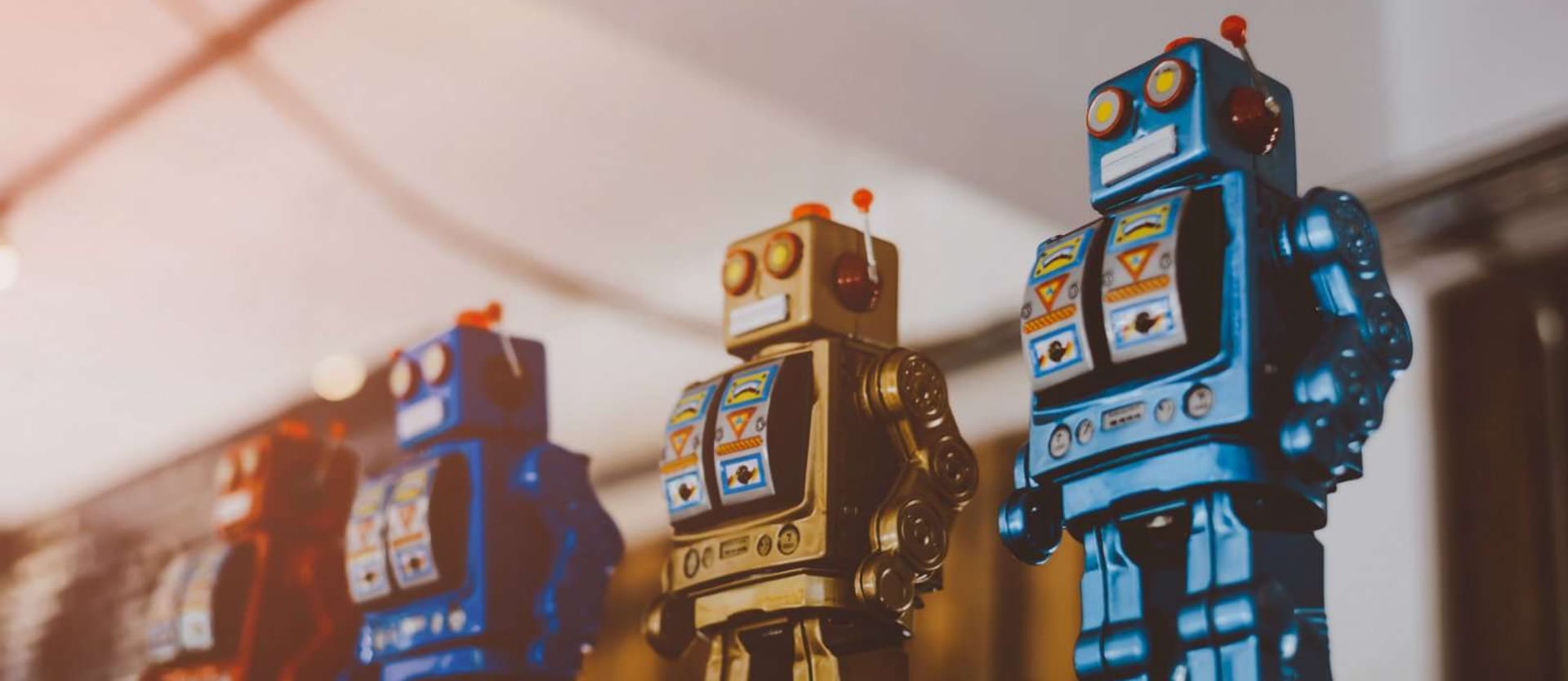With a growing number of apps being released annually, so-called app fatigue becomes a real issue. With uninstall rates soaring, it becomes increasingly harder to compete with established market leaders using traditional methods and strategies. That is why mobile-first businesses are in perpetual search mode hunting for new ways to grow their user base and win customer loyalty.
With the number of mobile messaging users expected to surpass 2 billion by 2018, more and more businesses consider chat apps to be a new field of opportunity. Largely due to the staggering growth of mobile messaging platforms, the new trend - chatbots - is gearing up. Driven by recent advances in artificial intelligence, the bot revolution is already upon us. How can you keep up with the trend? Is it even worth the effort? First, let’s get to the core of the matter and find out exactly what a bot is.
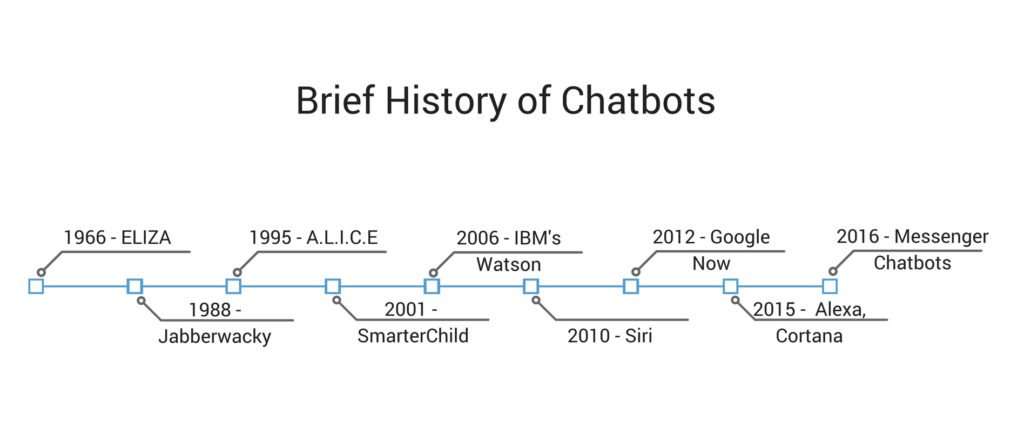
The first chatbot was created in 1966 by Joseph Weizenbaum. ELIZA could recognize certain keywords and pattern and answer accordingly, mimicking conversation with a psychotherapist.
Being implemented as a parody, ELIZA inspired a number of other projects, including A.L.I.C.E, Mitsuku, and SmarterChild. The latter, introduced in 2000, was significantly smarter than its predecessors: Using natural language processing, the program could understand human speech and respond accordingly. Later, SmarterChild turned into an automated customer service tool, marking the beginning of the modern chatbot.
The operating model of a simple chatbot relies heavily on markers or preset scenarios. If you tell a psychotherapist bot such as ELIZA, “I feel sad,” it would single out the word “sad” and reply with “What makes you feel sad?” to start the conversation. If you ask a weather bot if it will rain today in San Francisco, the bot, recognizing the trigger words “today” and “San Francisco,” will provide you with a weather forecast for the current day in the given location. Similarly, more advanced bots can analyze more complex requests.
Modern chatbots are capable of more than simply mimicking human speech and using preset scenarios. Some of them can be indistinguishable from a human. They have a personality, can perfectly understand human speech, and can perform a wide variety of tasks.
The more you interact with such a bot, the better it can learn your preferences and tailor the experience accordingly. What makes bots so smart is the machine learning algorithms that underlie their mechanics. For example, a shopper assistant bot can learn about your style and provide you with tailored suggestions of the items you might like.
Thus, Natural Language Processing and Machine Learning are two of the most important elements of the bot’s “brain,” its Artificial Intelligence core.
But the real chatbot boom exploded last year. Now, as the AI and data science tools are becoming more accessible and open for developers, this trend will gain an even wider adoption. Moreover, some major advances in this field introduced by the leading tech powerhouses, such as Microsoft, Apple, Google, and Facebook, are fueling the further development of the bot ecosystem.
Currently, chatbots can be roughly classified based on the following criteria:
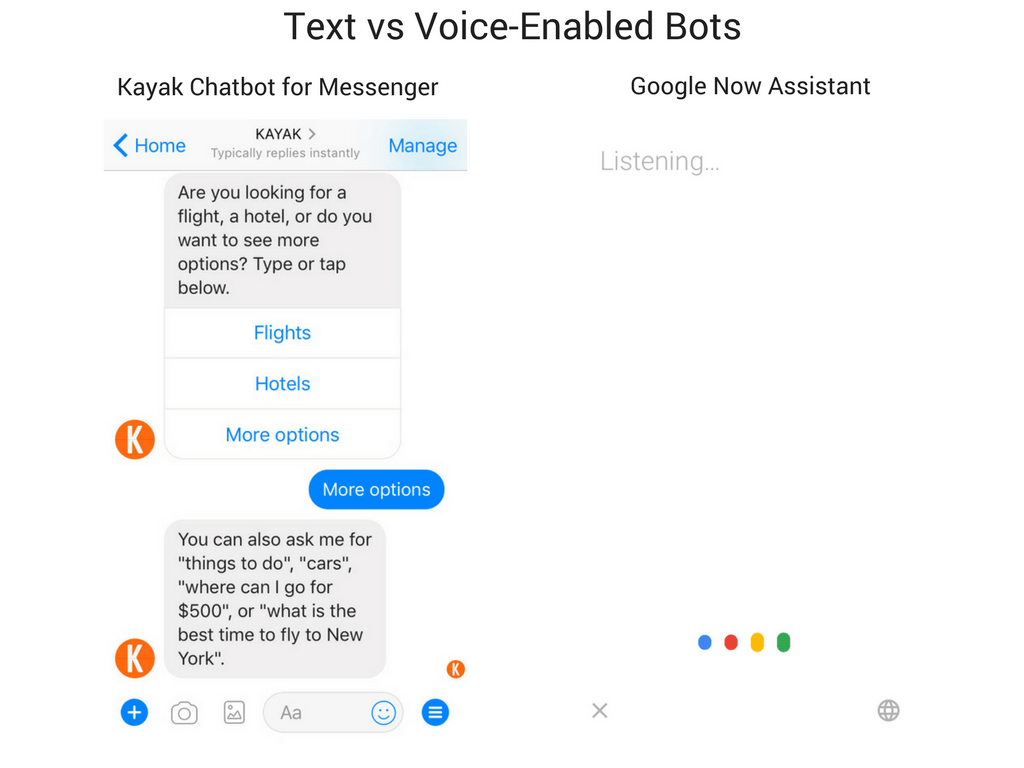
Third-party chatbot frameworks that provide out-of-the-box solutions for building chatbots represent a vital part of the chatbot ecosystem. The most popular among them are Microsoft Bot Framework, wit.ai, api.ai, Chatfuel, Octane AI, etc.
The current bot ecosystem is not only versatile, it is also quite rich. Facebook Messenger dominates the market with over 100,000 monthly active bots according to the official website as of April 2017. To put this in perspective, another popular messaging app, Kik, had 20,000 bots as of August 2016.
All in all, chatbots are currently among the leading UX design trends, and the interest with the conversational interfaces will only continue to climb. Thus, every business owner should consider the opportunities of using chatbots to add efficiency to his/her business.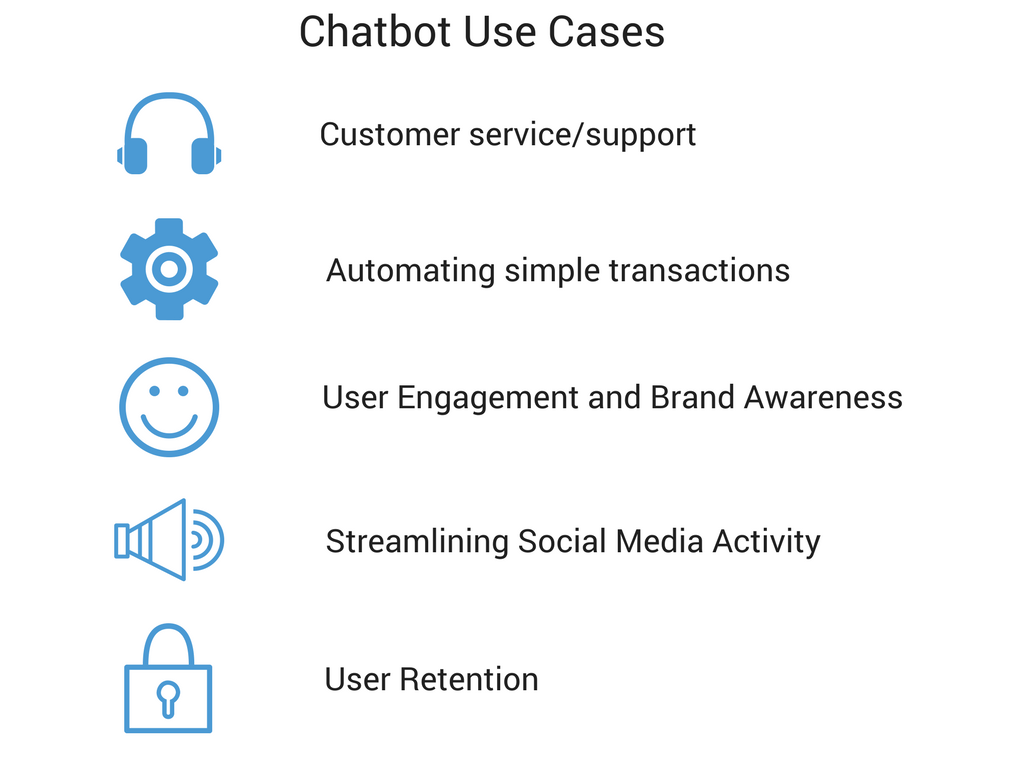
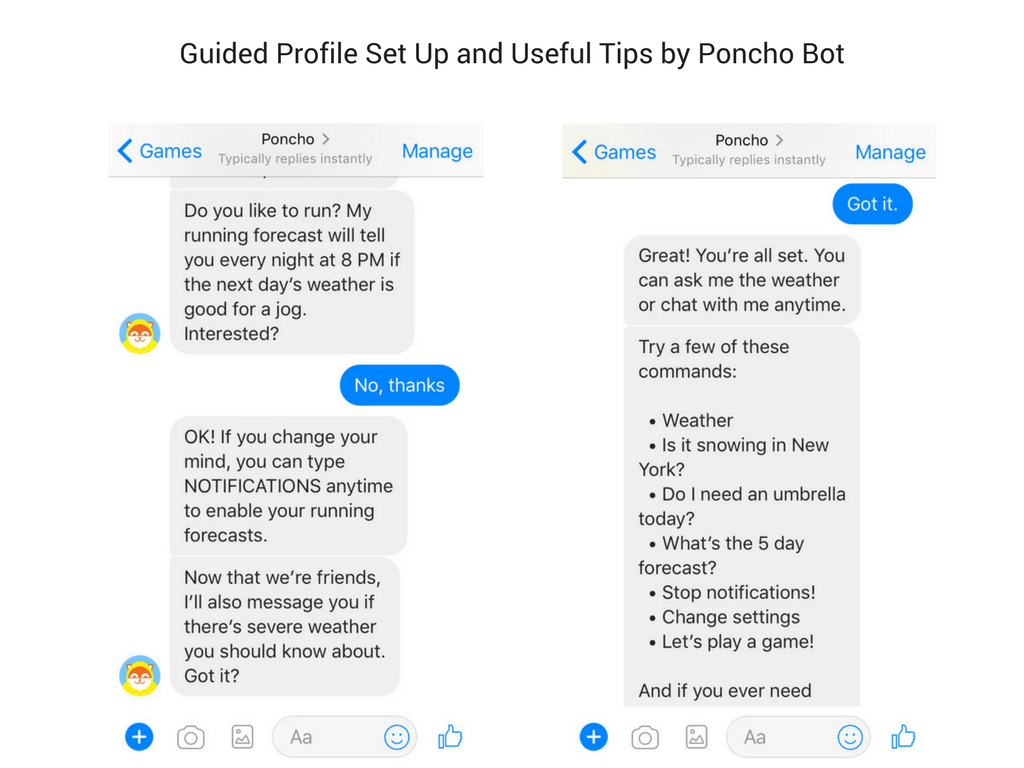
One of the most common mistakes bot creators make is trying to be everything for everyone. First, you should focus on your target audience and their needs. Building a Jack-of-all-trades, like Siri or Alexa, might seem like a great opportunity, but believe me, doing one thing really well will eventually get you further.
As part of your software product development strategy, chatbots can and should be implemented starting with an MVP, a bare minimum number of conversation flows and features. The product will mature and grow, addressing more and more user questions.
Considering that the mass use of chatbots has just begun, the expected growth is quite impressive. Rephrasing Apple’s famous slogan, there will soon be a bot for everything.
While apps will definitely continue to hold the field, due to the growing adoption of the mobile-first business strategy, more companies will invest in AI and bots to automate their business processes and reduce costs. A recent study by Juniper Research finds that chatbots could save businesses over $8 billion every year by 2022. According to this research, the current cost savings due to the use of chatbots equals $20 million globally.
As you can clearly see, the chatbot market is ready to take off. Being able to join the race early could mean better chances for future success. If building a chatbot is something you’re contemplating for your business, today might be the day.
With the number of mobile messaging users expected to surpass 2 billion by 2018, more and more businesses consider chat apps to be a new field of opportunity. Largely due to the staggering growth of mobile messaging platforms, the new trend - chatbots - is gearing up. Driven by recent advances in artificial intelligence, the bot revolution is already upon us. How can you keep up with the trend? Is it even worth the effort? First, let’s get to the core of the matter and find out exactly what a bot is.
What Is a Chatbot and How Does It Work?
A chatbot (or simply “bot”) is a program that uses artificial intelligence to mimic human conversation or perform different tasks, usually via a chat or voice interface. While the term itself is quite young, the history of bots can be traced back to 1960s.
The first chatbot was created in 1966 by Joseph Weizenbaum. ELIZA could recognize certain keywords and pattern and answer accordingly, mimicking conversation with a psychotherapist.
Being implemented as a parody, ELIZA inspired a number of other projects, including A.L.I.C.E, Mitsuku, and SmarterChild. The latter, introduced in 2000, was significantly smarter than its predecessors: Using natural language processing, the program could understand human speech and respond accordingly. Later, SmarterChild turned into an automated customer service tool, marking the beginning of the modern chatbot.
The operating model of a simple chatbot relies heavily on markers or preset scenarios. If you tell a psychotherapist bot such as ELIZA, “I feel sad,” it would single out the word “sad” and reply with “What makes you feel sad?” to start the conversation. If you ask a weather bot if it will rain today in San Francisco, the bot, recognizing the trigger words “today” and “San Francisco,” will provide you with a weather forecast for the current day in the given location. Similarly, more advanced bots can analyze more complex requests.
Modern chatbots are capable of more than simply mimicking human speech and using preset scenarios. Some of them can be indistinguishable from a human. They have a personality, can perfectly understand human speech, and can perform a wide variety of tasks.
The more you interact with such a bot, the better it can learn your preferences and tailor the experience accordingly. What makes bots so smart is the machine learning algorithms that underlie their mechanics. For example, a shopper assistant bot can learn about your style and provide you with tailored suggestions of the items you might like.
Thus, Natural Language Processing and Machine Learning are two of the most important elements of the bot’s “brain,” its Artificial Intelligence core.
The Current State of the Bot Ecosystem
The new wave of chatbots started not so long ago with the introduction of the IBM’s Watson. Fueled by the advances in AI technologies, bots later evolved into smart personal assistants, such as Siri, Google Assistant, Alexa, Cortana, and many others, becoming an integral part of our everyday life. Right now, it is difficult to find a person who has never used an AI-based bot to search for information, resolve a support issue, book a flight, or buy anything from an online shop.But the real chatbot boom exploded last year. Now, as the AI and data science tools are becoming more accessible and open for developers, this trend will gain an even wider adoption. Moreover, some major advances in this field introduced by the leading tech powerhouses, such as Microsoft, Apple, Google, and Facebook, are fueling the further development of the bot ecosystem.
Currently, chatbots can be roughly classified based on the following criteria:
-
Distribution medium
-
Type of interaction

-
Underlying mechanics
-
Scope of functionality
Third-party chatbot frameworks that provide out-of-the-box solutions for building chatbots represent a vital part of the chatbot ecosystem. The most popular among them are Microsoft Bot Framework, wit.ai, api.ai, Chatfuel, Octane AI, etc.
The current bot ecosystem is not only versatile, it is also quite rich. Facebook Messenger dominates the market with over 100,000 monthly active bots according to the official website as of April 2017. To put this in perspective, another popular messaging app, Kik, had 20,000 bots as of August 2016.
All in all, chatbots are currently among the leading UX design trends, and the interest with the conversational interfaces will only continue to climb. Thus, every business owner should consider the opportunities of using chatbots to add efficiency to his/her business.
The Business Case for Chatbots: Why Do You Need One?
According to Forbes, finance, travel, and retail are among the industries that will benefit from chatbots the most. We can already see multiple examples of brands introducing such tools. Some of the most prominent cases across the spectrum of industries are:Finance
- Eno by Capital One - an intelligent banking assistant
- Mastercard bots for banks and merchants
- Voice-enabled banking assistant service by Santander U.K.
Travel
- Skyscanner bot for Messenger for simplified flight search
- KLM chatbot delivers flight info and documents via chat
- Lola on-demand personal travel service
Retail and Commerce
- eBay ShopBot - personal shopping assistant
- Sephora for Kik - personalized beauty tips and product recommendations
- Uber bot for Messenger - makes requesting a ride even easier
- Customer service/support
- Automating simple transactions
- User engagement and brand awareness
- Streamlining social media activity
- User retention (sending out notifications, reminders, customized offers).

10 Best Practices for Building Chatbots: The Dos and Don’ts
While there are still no official standards or guidelines for conversational interfaces, the industry has developed its best practices based on the massive number of existing products. If you are planning to join the bot race soon, here are the top things to consider.-
Choose the right platform
-
Build with a purpose
-
Document all possible flows of conversation
-
Decide on the type of interactions
-
Strive for consistency
-
Focus on microcopy
-
Guide your user

-
Prepare to handle non-standard requests
-
Always have a backup
-
Personalize
One of the most common mistakes bot creators make is trying to be everything for everyone. First, you should focus on your target audience and their needs. Building a Jack-of-all-trades, like Siri or Alexa, might seem like a great opportunity, but believe me, doing one thing really well will eventually get you further.
As part of your software product development strategy, chatbots can and should be implemented starting with an MVP, a bare minimum number of conversation flows and features. The product will mature and grow, addressing more and more user questions.
Final Word
According to a study conducted by Oracle, 80 percent of the respondents are planning to use chatbots for customer interactions by 2020. At the same time, 36 percent of them have already implemented a chatbot service.Considering that the mass use of chatbots has just begun, the expected growth is quite impressive. Rephrasing Apple’s famous slogan, there will soon be a bot for everything.
While apps will definitely continue to hold the field, due to the growing adoption of the mobile-first business strategy, more companies will invest in AI and bots to automate their business processes and reduce costs. A recent study by Juniper Research finds that chatbots could save businesses over $8 billion every year by 2022. According to this research, the current cost savings due to the use of chatbots equals $20 million globally.
As you can clearly see, the chatbot market is ready to take off. Being able to join the race early could mean better chances for future success. If building a chatbot is something you’re contemplating for your business, today might be the day.

Maryna is a passionate writer with a talent for simplifying complex topics for readers of all backgrounds. With 7 years of experience writing about travel technology, she is well-versed in the field. Outside of her professional writing, she enjoys reading, video games, and fashion.
Want to write an article for our blog? Read our requirements and guidelines to become a contributor.
